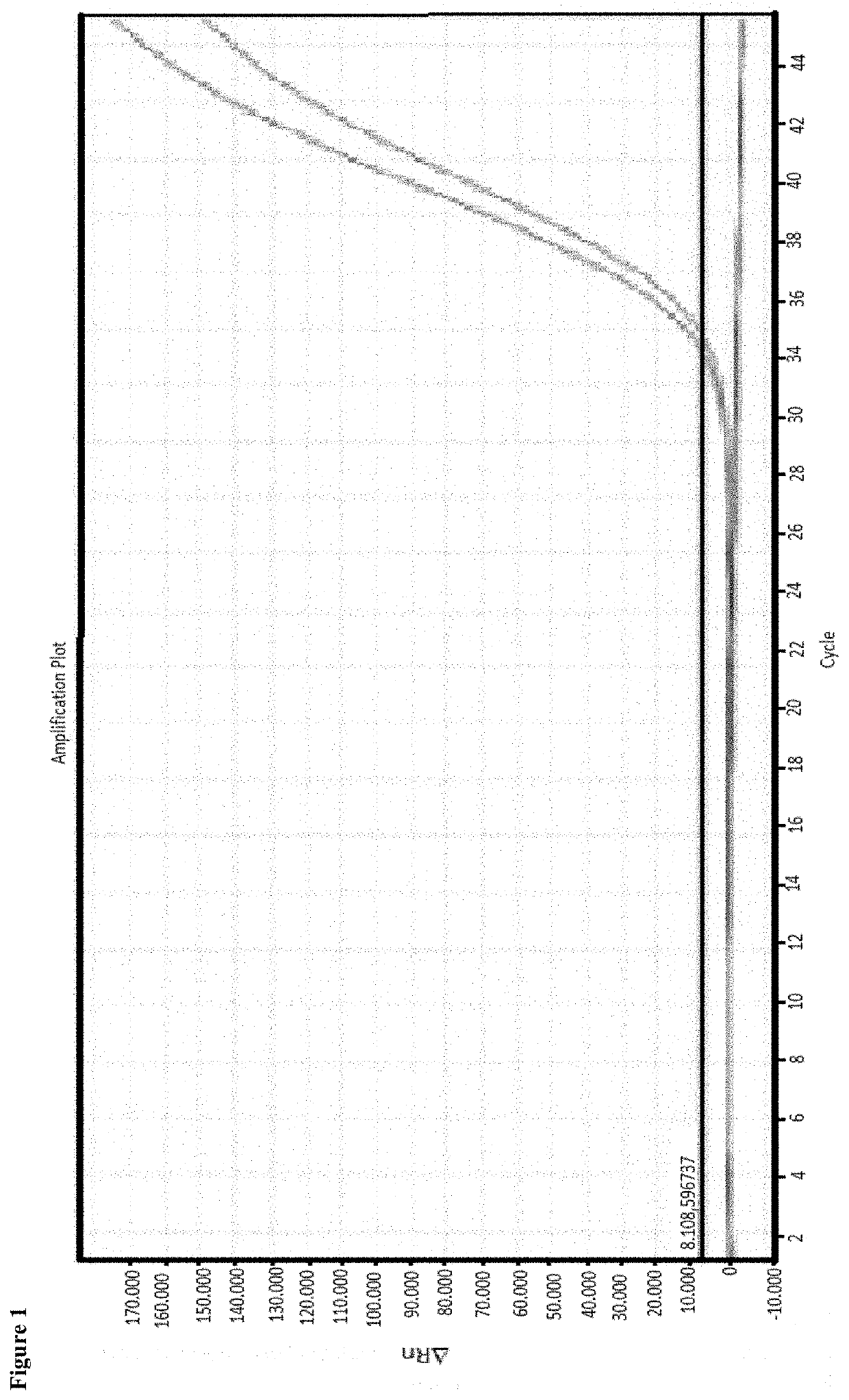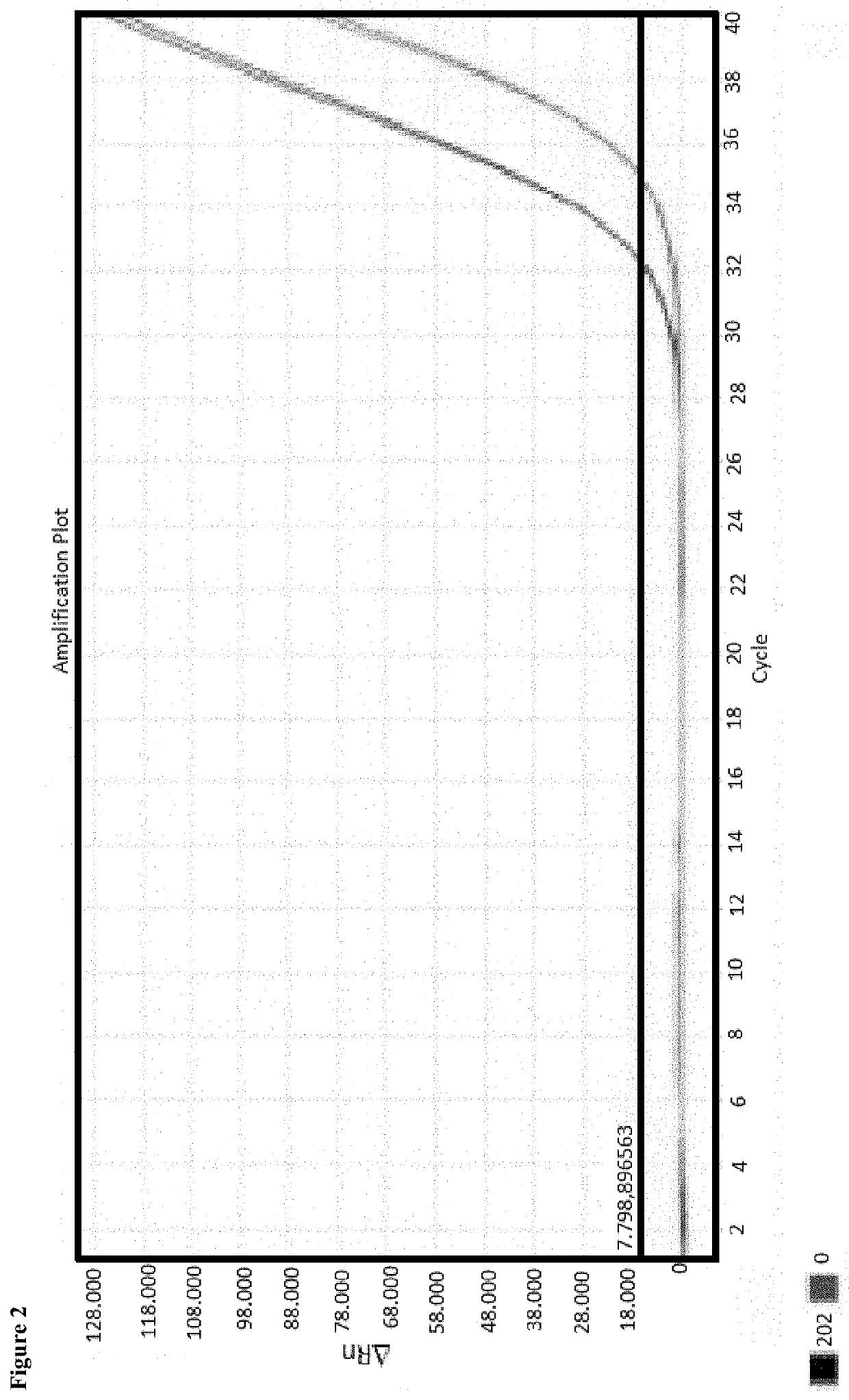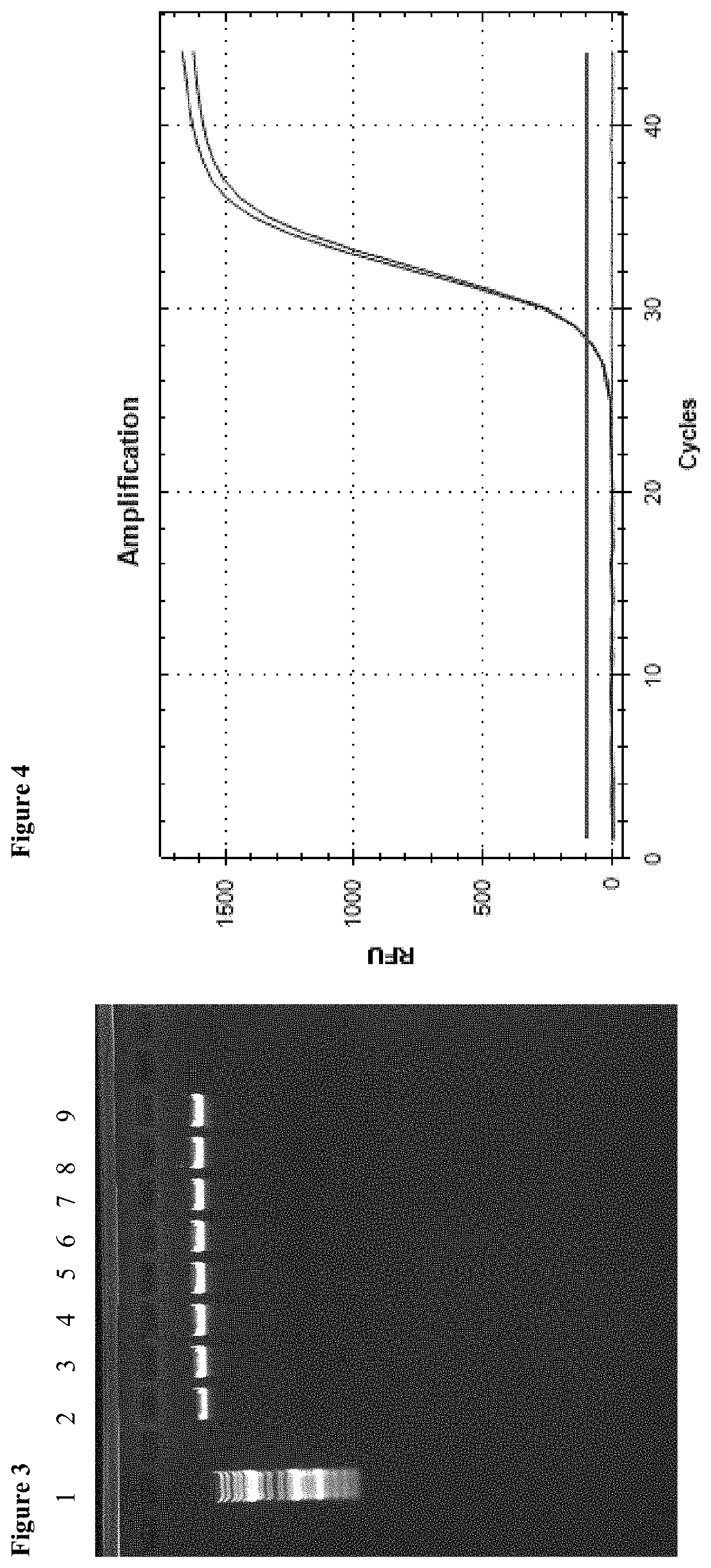Method for enriching biomolecules and for removing the biomolecules from a biological sample
a biomolecule and biological sample technology, applied in the field of enriching biomolecules and removing biomolecules from biological samples, can solve the problems of difficult diagnostic use, time-consuming and unsuitable routine diagnostics, and the method as well is time-consuming and expensive, so as to eliminate the disadvantages of known technical solutions
- Summary
- Abstract
- Description
- Claims
- Application Information
AI Technical Summary
Benefits of technology
Problems solved by technology
Method used
Image
Examples
embodiment 1
[0038]Enrichment of cell-free DNA from a plasma sample of 1 ml. Proof of the necessary combination of alginate solution, reagent for formation of an alginate gel as well as particles separable by means of a magnetic field
[0039]Initial sample for the enrichment had been human plasma. The plasma sample had been centrifuged again for 10 minutes prior to the application in order to remove still existing cells, if applicable. Further processing took place with the supernatant. Three different processes have been tested.
[0040]Sample 1: 30 μl of a 0.5% alginate solution were added to the sample and the batch was briefly mixed. Subsequently, 150 μl of a 1 molar calcium chloride solution were added as well as 50 μl of a magnetic particle suspension (MAG Suspension; Analytik Jena AG).
[0041]Sample 2: 30 μl of a 0.5% alginate solution were added to the sample and the batch was briefly mixed. Subsequently 50 μl of a magnetic particle suspension (MAG Suspension; Analytik Jena AG) were added.
[0042...
embodiment 2
[0055]Enrichment of cell-free DNA from a plasma sample of 1 ml as well as of 5 ml and subsequent extraction of DNA
[0056]Human plasma had been the initial sample for enrichment. Prior to application, the plasma sample had been centrifuged again for 10 minutes in order to remove still existing cells, where applicable. Further processing took place with the supernatant.
[0057]The 1 ml sample has been treated as follows. 30 μl of a 0.5% alginate solution were added to the sample, and the batch was briefly mixed. Subsequently, 150 μl of a 1 molar calcium chloride solution were added as well as 50 μl of a magnetic particle suspension (MAG Suspension; Analytik Jena AG). The batch was briefly mixed and incubated for 10 minutes. Subsequently, separation of the magnetic particles by means of a magnet took place. The supernatant was removed, and the magnetic particles were washed with 1 ml water. After renewed separation of the magnetic particles, the supernatant was completely removed.
[0058]40...
embodiment 3
[0067]Enrichment of genomic DNA from an aqueous solution (1 ml) and direct release of the genomic DNA without further DNA extraction. Comparison of the method according to the invention with the method from the patent specification DE 10 2008 023 297 B4
[0068]The initial sample for enrichment was an aqueous solution which contained genomic DNA. Enrichment occurred by means of the method from the patent specification DE 10 2008 023 297 B4 as well as by means of the method according to the invention without a centrifugation step. For the method from the patent specification, the commercial product PME free-circulating DNA Extraction Kit (Analytik Jena AG) has been used. The method according to the invention was carried out as follows.
[0069]30 μl of a 0.5% alginate solution were added to the sample, and the batch was briefly mixed. Subsequently, 150 μl of a 1 molar calcium chloride solution were added as well as 50 μl of a magnetic particle suspension (MAG Suspension; Analytik Jena AG)....
PUM
| Property | Measurement | Unit |
|---|---|---|
| Magnetism | aaaaa | aaaaa |
Abstract
Description
Claims
Application Information
 Login to View More
Login to View More - R&D
- Intellectual Property
- Life Sciences
- Materials
- Tech Scout
- Unparalleled Data Quality
- Higher Quality Content
- 60% Fewer Hallucinations
Browse by: Latest US Patents, China's latest patents, Technical Efficacy Thesaurus, Application Domain, Technology Topic, Popular Technical Reports.
© 2025 PatSnap. All rights reserved.Legal|Privacy policy|Modern Slavery Act Transparency Statement|Sitemap|About US| Contact US: help@patsnap.com



